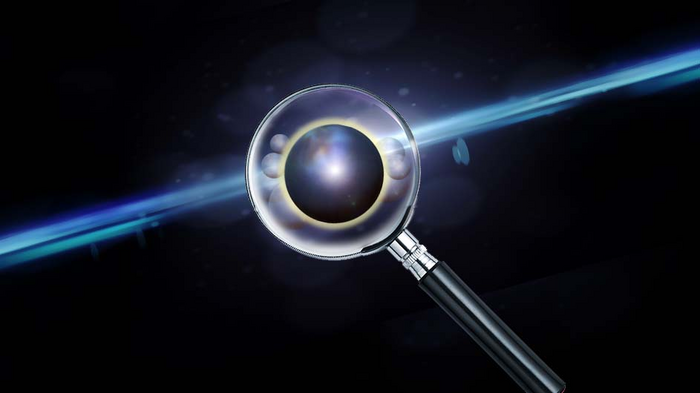Reviewed by Alex SmithJun 28 2022
In many everyday electrical devices, light is utilized to communicate information. The next generation of quantum gadgets will employ light, which is composed of quantum particles called photons, to process data. However, before that, scientists must learn to manipulate individual photons.
 Like a magnifying glass zooming in on an object, a time lens can zoom in on time. In recent work, engineers at Columbia built a time lens to identify individual photons. Image Credit: Nicoletta Barolini
Like a magnifying glass zooming in on an object, a time lens can zoom in on time. In recent work, engineers at Columbia built a time lens to identify individual photons. Image Credit: Nicoletta Barolini
As proposed by Columbia Engineers in Optica, a time lens is a viable option.
Just like an ordinary magnifying glass can zoom in on some spatial phenomena you wouldn’t otherwise be able to see, a time lens lets you resolve details on a temporal scale.
Chaitali Joshi, Study First Author, Columbia Engineering
Joshi was also a former Ph.D. student in Alexander Gaeta’s lab.
The team’s time lens enables scientists to distinguish individual light particles quicker than ever before. A laser is a focused beam of many, many, many photons oscillating through space at a specific frequency.
A signal photon is a “mix” of two laser beams in the experimental procedure to produce a new packet of light with a different frequency. Joshi and her coworkers used their time lens to distinguish individual photons with picosecond resolution from a broader stream.
According to Joshi, a postdoc at CalTech, that is 10–12 times faster than what has been observed with other single-photon detectors. With such a time lens, the precise temporal resolution of individual photons that is not possible with state-of-the-art photon detectors is possible.
The group can reshape a single photon's path by modifying its spectra, or composite color, in addition to viewing individual photons. Creating quantum information systems is a crucial step.
In such a network, all the nodes need to be able to talk to each other. When those nodes are photons, you need their spectral and temporal bandwidths to match, which we can achieve with a time lens.
Chaitali Joshi, Study First Author, Columbia Engineering
The Gaeta lab will keep investigating how they can regulate individual photons and aims to further reduce the time resolution by over a factor of three with future adjustments.
“With our time lens, the bandwidth is tunable to whatever application you have in mind: you just need to adjust the magnification,” said Joshi. Data processing, quantum key dispersion, quantum sensing, and more uses are possible.
The work is currently carried out with optical fibers, but the lab plans to scale the system to multiple devices on a chip and add time lenses into integrated photonic chips, similar to electrical chips. This will enable numerous photons to be analyzed at once.
Journal Reference:
Joshi, C., et al. (2022) Picosecond-resolution single-photon time lens for temporal mode quantum processing. Optica. doi.org/10.1364/OPTICA.439827.